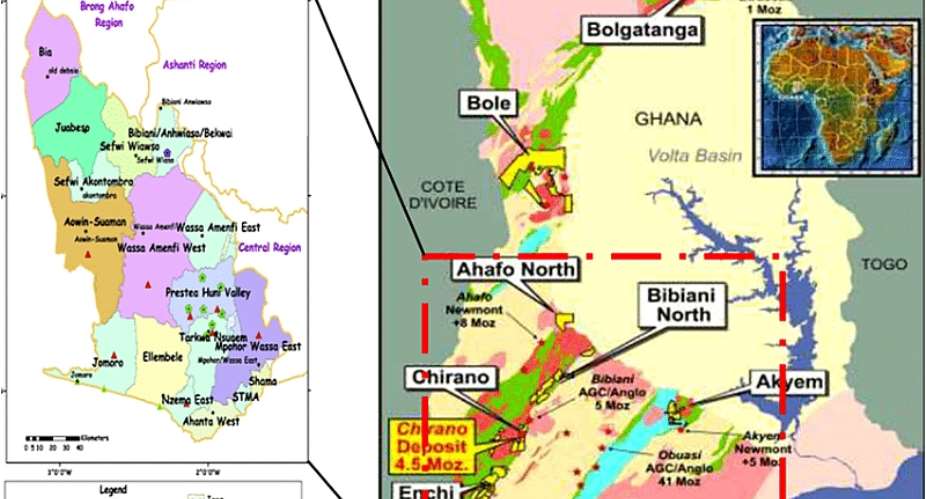Critical minerals play a crucial role in powering modern industries and technologies, with their diverse applications ranging from electronics and renewable energy to healthcare and defense. This article aims to explore the properties, applications, and primary sources of critical minerals, focusing on the environmental impacts of their mining operations in Ghana and other African countries. Additionally, we will discuss the associated challenges and potential mitigation strategies to ensure sustainable mineral resource management and promote environmental stewardship.
Properties of Critical Minerals:
Critical minerals, also known as rare earth elements and strategic minerals, are a group of 35 minerals that are essential for various high-tech applications. These minerals possess unique chemical and physical properties that make them indispensable in manufacturing processes. Some of the key properties of critical minerals include high thermal and electrical conductivity, magnetic properties, and high strength-to-weight ratios. These properties enable critical minerals to be used in a wide range of applications, including electronics, renewable energy, aerospace, and defense industries.
Diverse Applications of Critical Minerals:
Critical minerals are extensively used in the production of electronic devices, such as smartphones, laptops, and televisions, due to their exceptional electrical conductivity and magnetic properties. They are also essential components in renewable energy technologies, including wind turbines, solar panels, and electric vehicle batteries, which rely on critical minerals like lithium, cobalt, and rare earth elements. Moreover, critical minerals are vital in healthcare applications, such as medical imaging equipment and surgical instruments, as well as in defense systems, such as missile guidance systems and radar technology.
Primary Sources of Critical Minerals:
The primary sources of critical minerals are concentrated in specific regions globally, with significant reserves found in countries like China, Australia, and the United States. In Africa, countries such as Ghana, South Africa, and the Democratic Republic of Congo have notable reserves of critical minerals, including cobalt, lithium, and rare earth elements. These minerals are typically extracted from mining sites through a combination of open-pit mining, underground mining, and heap leaching processes. However, the extraction and processing of critical minerals can have adverse environmental impacts, leading to habitat destruction, water pollution, and land degradation.
Environmental Impacts of Critical Mineral Mining Operations:
The mining of critical minerals can have profound environmental impacts on local ecosystems, communities, and biodiversity. Extractive activities, such as open-pit mining and heap leaching, can result in the release of harmful chemicals and heavy metals into the soil, water, and air, leading to ecosystem contamination and health risks for nearby populations. Furthermore, the extensive land use for mining operations can disrupt natural habitats, endangering wildlife and plant species. Additionally, the energy-intensive nature of mineral processing and refining contributes to greenhouse gas emissions and climate change.
Challenges and Mitigation Strategies in Ghana and African Countries:
In Ghana and other African countries, the mining of critical minerals presents unique challenges related to environmental sustainability, social responsibility, and economic development. One of the key challenges is the lack of adequate regulatory frameworks and enforcement mechanisms to address the environmental impacts of mining operations effectively. Additionally, the limited capacity of local communities to participate in decision-making processes and benefit-sharing initiatives has led to social conflicts and economic disparities in mining regions.
To address these challenges, various mitigation strategies can be implemented to promote sustainable mineral resource management and minimize environmental degradation. These strategies include the adoption of best practices in mining operations, such as eco-friendly extraction methods, waste management protocols, and biodiversity conservation measures. Strengthening the capacity of regulatory agencies to monitor and enforce environmental standards is essential in ensuring compliance with environmental regulations. Furthermore, fostering transparent stakeholder engagement, including affected communities, civil society organizations, and government authorities, can facilitate dialogue and collaboration on sustainable mining practices.
Conclusion:
In conclusion, critical minerals are essential for driving technological innovation and economic growth, but their extraction and processing pose significant environmental risks and challenges. By understanding the properties, applications, and primary sources of critical minerals, as well as the environmental impacts of mining operations, we can develop effective mitigation strategies to promote sustainable mining practices and environmental stewardship in Ghana and across Africa. By harnessing the potential of critical mineral resources in a responsible manner, we can contribute to the long-term prosperity and well-being of present and future generations.





 Ex-gratia hasn’t served its purpose, let’s scrap it – Speaker Bagbin
Ex-gratia hasn’t served its purpose, let’s scrap it – Speaker Bagbin
 Free SHS Bill: SHS to be extended from 3 to 6 years
Free SHS Bill: SHS to be extended from 3 to 6 years
 Accra Mall’s Chicken Inn Manager jailed 5years for stealing GHC19,904
Accra Mall’s Chicken Inn Manager jailed 5years for stealing GHC19,904
 Bawumia to present Napo as Running Mate to NPP National Council on Thursday
Bawumia to present Napo as Running Mate to NPP National Council on Thursday
 Dangote, Supacem, Ghacem, Diamond Cement, CIMAF, other cement manufacturers boyc...
Dangote, Supacem, Ghacem, Diamond Cement, CIMAF, other cement manufacturers boyc...
 Inflation drops to 23.1% as fiscal and monetary policies take effect
Inflation drops to 23.1% as fiscal and monetary policies take effect
![Finance Minister Dr. Mohammed Amin Adam[left] and Founding President of IMANI Africa, Franklin Cudjoe](https://cdn.modernghana.com/content__/84/56/71202472609-m6itl8w331-img6642.jpeg) Finance Minister Amin Adam has been impressive so far — Franklin Cudjoe
Finance Minister Amin Adam has been impressive so far — Franklin Cudjoe
![Dr. Henry Kwabena Kokofu [File Photo]](https://cdn.modernghana.com/content__/84/56/71202465602-wbreuihuto-c21d3a27-e71e-4770-ac3d-fa06f0d31295.jpeg) 2024 election: Henry Kwabena Kokofu rallies support for Bawumia-Napo ticket
2024 election: Henry Kwabena Kokofu rallies support for Bawumia-Napo ticket
 Alleged lavish Miami trip: Sammy Gyamfi sues Asaase Radio, Wilberforce Asare, tw...
Alleged lavish Miami trip: Sammy Gyamfi sues Asaase Radio, Wilberforce Asare, tw...
